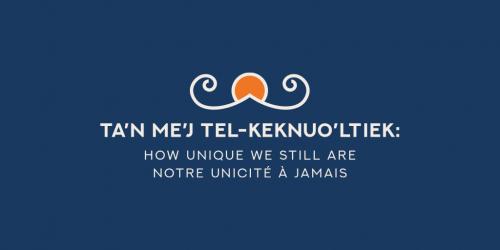
“There can be no reconciliation without truth, and the truth is that we are still here”
As a Mi’kmaw woman who grew up in Kjipuktuk I always struggled with the lack of visible representation of Mi’kmaw in this place. As a young academic I learned the importance of historical representation in helping our society to understand our shared history. As a visiting curator I have been honoured to be provided this opportunity to highlight some of the moments and people which are impactful and worth remembering.
This exhibit is intended to not only educate the public about our continued existence and treaty relationship but also to provide Mi’kmaw youth with a sense of cultural pride. It is a reminder that the Mi’kmaw continue to be unique after more that 300 years of resistance to colonial and Canadian attempts at erasure and assimilation.
By relying on the oral history of individual Mi’kmaw people we highlight the range of individual experiences of seafaring and economic involvement outside of existing stereotypes. Mi’kmaw culture is a blending of old concepts and new technology and this exhibit highlights this by rooting the individual stories in Mi’kmaw single word concepts.
In recognition of our shared history in this place the exhibit is presented in Mi’kmaw, French, and English.
It is my hope that this exhibit will not only demonstrate some of the many ways that the Mi’kmaw continue to be unique but also educate people about our shared treaty relationship.
#WeAreAllTreatyPeople
#MMAUnique
Salina Kemp, Guest Curator
As members of the curatorial team for this exhibit, it has been a privilege and an inspiration to learn from remarkable Mi'kmaw (and Anishnaabe) people living, working, playing on the land and waters of Mi'kma'ki, the past and present territory of the Mi'kmaq. The life and the people that sprout from here continue to grow and blossom here, in ways both very new and very old. We are deeply grateful to them for sharing their lands, waters and their experiences with us, in preparing this exhibit and in our everyday lives.
As Mi'kmaw Native Friendship Centre Resident Elder Debbie Eisan says, “…to share our culture, our spirituality, our customs, our traditions, our honour, our integrity: to be able to share that with settlers, that way we learn from each other.”
In this exhibit, their words share truths-- happy truths, hard truths--that can help us all, as Treaty People, move closer to meaningful reconciliation in this place.
Amber Laurie, Assistant Curator of Marine History; Roger Marsters, Curator of Marine History, Nova Scotia Museum.
I view this exhibit as a spotlight recognition on a diverse, resilient culture. How Unique We Still Are is a celebration of a people and their way of life. It is a survival of a culture, their stories & livelihoods. Livelihoods that are still being fought for today.
Ta’n me’j Tel-keknuo’ltiek is the opportunity to utilize every aspect of my love as a Designer & Artist with the knowledge and respect for my culture to educate. It is a chance to restore and preserve the stories and literal impressions of my ancestors.
Our logo renews and continues the teachings behind the double-curve motif and its significance in Mi'kmaw culture. The story is that the mirroring image of the double-curve reminds us to keep balance in our lives. The prominent clusters of curves together or side-by-side can symbolize community & alliance. Mi'kma'ki tribes associate the motif with one's earth & spirit journeys. The left spiral is the start of life in the womb, and the right represents the latter.
In each piece of artwork, I utilize traditional and modern Mi’kmaw colours coupled with re-creations of historical petroglyphs found at Kejimkujik Park and McGowan Lake, Nova Scotia. These re-creations represent the stories that narrate the essence of each of the four Mi’kmaw thematic concepts used throughout the exhibit: Ta’n me’j Tel-keknuo’ltiek, Netukulimk, Msit
No ‘kmaq & Siawa’sik.
I hope every aspect of our efforts over the last two years leaves viewers with a piece of newfound knowledge and a fresh perspective of how unique Mi'kmaq people continue to be."
Aaron Googoo, Graphic Designer, Illustrator, and Branding Strategist